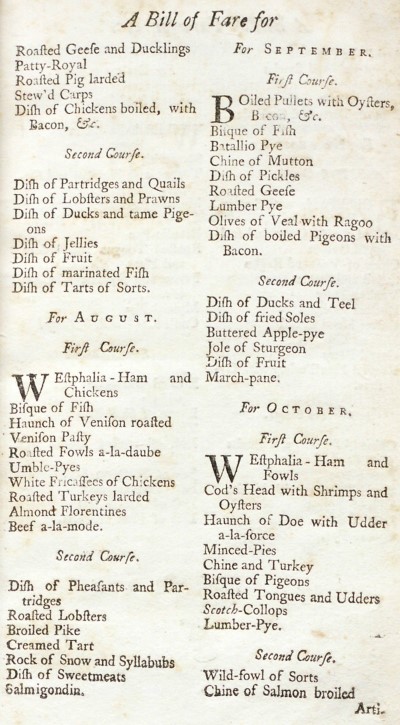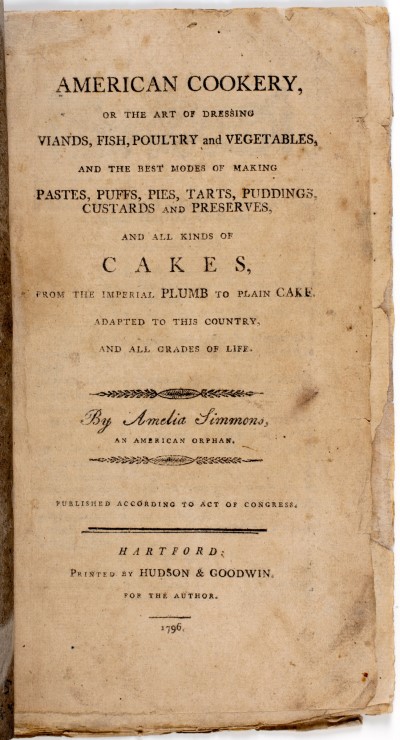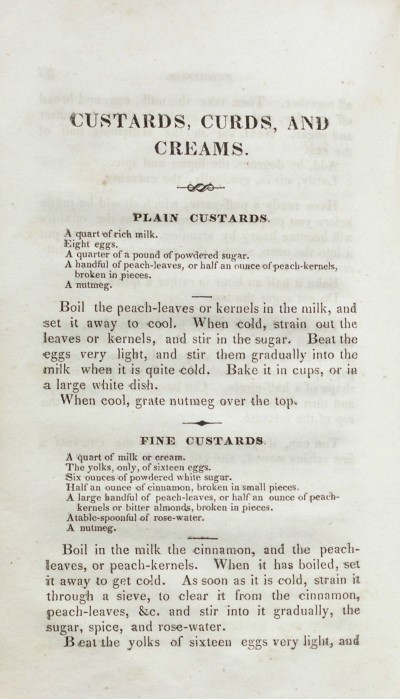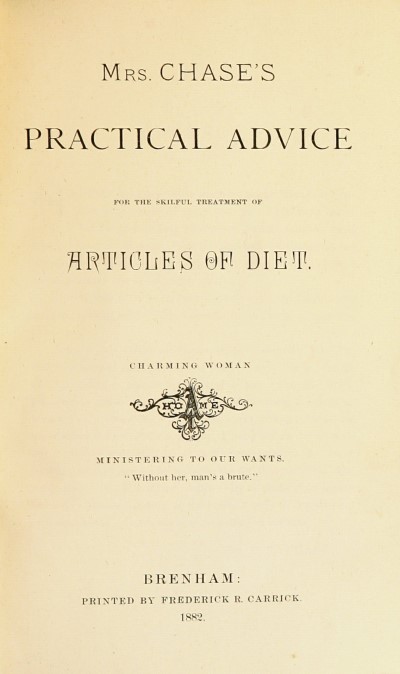Many early cookbooks are published collections of recipes, similar to today’s cookbooks. In some cases, the cook as author and entrepreneur chose to share their best recipes with a wider audience. In others, there might be a familial or local connection to the printer or publisher. And finally, commercial publishing houses printed, promoted, and distributed cookbooks.
 | The Compleat Housewife (1742)
The earliest cookbooks published in America were reprinted titles previously published in England or France. The first cookbook known to be printed in the American colonies was Eliza Smith’s Compleat Housewife—a popular title originally published in London in 1727. An American edition appeared in Williamsburg, Virginia, twenty years later. Recipes ranged from “frugal” to those for a most “sumptuous table,” and were written in narrative form, without separate lists of ingredients or specific directives regarding tools, temperatures, or techniques. |

| American Cookery (1796)
The first cookbook authored by an American was published in Hartford, Connecticut, in 1796, written by Amelia Simmons. American Cookery was printed “for the author,” indicating some form of self-publication, though little else is known about Simmons. Her cookbook contains a collection of dishes now cherished and celebrated as authentically American: roasted turkey, pumpkin pie, johnnycake, and cranberry relish. The text also documents the term for a sweet, handheld treat coined by Dutch settlers—the “cookey.” American Cookery was published and pirated in several editions for more than thirty years. Few copies of the first edition survive. |
 | Dairying Exemplified (1796)
Some early publications catered to those who wanted to learn more about a specific food or process. Dairying Exemplified, by Josiah Twamley, focuses on milk products and cheesemaking. When milk was plentiful, cheese could be made and stored away for later consumption. Twamley’s first American edition (1796), based on an early British edition, includes advice and cheese recipes directed at dairywomen, as well as tips and techniques on breeding and raising stock. |
 | Seventy-Five Receipts for Pastry, Cakes, and Sweetmeats (1835)
In the nineteenth century, specialty cookbooks that focused on just dessert or drink were popular, as printed recipes were often necessary for foods that were not made frequently or were the center of special celebrations. In 1828, Eliza Leslie (aka “A lady of Philadelphia”) published Seventy-Five Receipts for Pastry, Cakes, and Sweetmeats. The book includes a showcase of American recipes written to be easily understood. Notably, Leslie lists the ingredients above the instructions, in contrast to the entirely narrative style of many earlier cookbooks. |
 | How to Mix Drinks, or, or, The Bon-Vivant's Companion (1862)Famed bartender and “father of American mixology” Jerry Thomas followed this ingredients-first format in How to Mix Drinks, or The Bon-Vivant’s Companion (1862), the first cocktail book published in the United States. |
 | The Dessert Book (1872)In 1872, the author (“A Boston Lady”) of The Dessert Book wrote of dessert that it was “absolutely necessary to the economy of the household that this art should form a part of every lady’s education.” |
 | Mrs. Chase’s Practical Advice for the Skilful [sic] Treatment of Articles of Diet (1882)
Cakes, and especially their icing and trimming, were a particular specialty for Caroline Chase of Brenham, Texas, who published Mrs. Chase’s Practical Advice for the Skilful [sic] Treatment of Articles of Diet in 1882, one of the earliest cookbooks published in Texas. The pamphlet was advertised in the May 25 edition of the Brenham Weekly Banner. Chase notes on the last page: “I append the names of the ladies of Brenham, that have taken lessons of me in making and baking cake, also in icing and trimming, and to them I dedicate this little book.” |
Readers can browse through the cookbooks digital library of over 100 digitized cookbooks or start with thematic introductions describing a few select cookbook titles in the following categories: